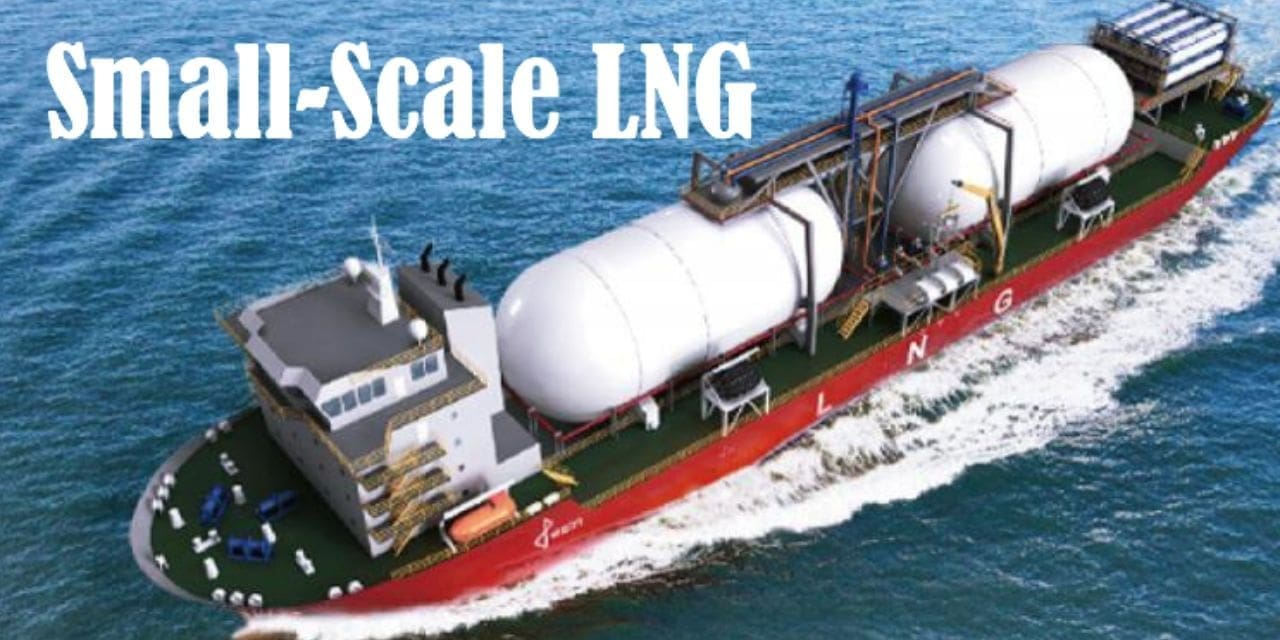The report “Small-Scale LNG Market by Type (Liquefaction, Regasification), Application (Heavy-Duty Vehicles, Industrial & Power, Marine Transport), Mode of supply (Trucks, Trans-shipment & Bunkering) Region (North America, Europe, APAC, MEA) – Global Forecast to 2028″, is projected to grow from USD 46.4 billion in 2023 to USD 92.8 billion by 2028, recording a CAGR of 14.9% during the forecast period. The small-scale LNG market is being propelled by several significant factors. First and foremost is the energy cost advantage offered by small-scale LNG solutions. Compared to other conventional fuels, LNG has a lower cost, making it an attractive option for various applications. Additionally, small-scale LNG provides environmental benefits as it emits lower greenhouse gases and pollutants compared to traditional fossil fuels. This aligns with the increasing global focus on sustainability and cleaner energy sources. Furthermore, there is a growing demand for small-scale LNG across diverse sectors such as heavy-duty vehicles, industrial and power generation, and marine transport. This demand is driven by the need for efficient and cleaner energy solutions in these industries. Altogether, the combination of energy cost advantage, environmental benefits, and expanding demand from various applications positions small-scale LNG as a key player in the energy market, shaping a more sustainable and diverse energy landscape.
Browse
- 298 Market data Tables
- 44 Figures
- 288 Pages and in-depth TOC on “Small-Scale LNG Market – Global Forecast to 2028”
Some of the prominent key players are:
- Linde plc (US)
- Wartsila Corporation (Finland)
- Honeywell International Inc. (US)
- Shell plc (UK)
- Air Products & Chemicals, Inc. (US)
- ENGIE S.A (France)
- Chart Industries, Inc. (US)
- Gasumoy (Finland)
- Sofregaz(France)
- ExcelerateEnergy Inc (US)
Driver: Rising demand for LNG in bunkering, road transportation, and off-grid power
The demand for small-scale LNG (liquefied natural gas) has been experiencing significant growth in various sectors, including bunkering, road transport, and off-grid power. Bunkering, which refers to the process of supplying fuel to ships, is increasingly adopting LNG as a cleaner alternative to traditional marine fuels. With stricter emissions regulations in place, LNG offers a solution that reduces sulfur and particulate matter emissions, contributing to cleaner maritime operations. In road transport, small-scale LNG is gaining traction as a viable option for heavy-duty vehicles, such as trucks and buses. It provides lower emissions, improved air quality, and enhanced fuel efficiency compared to diesel. Furthermore, in remote areas or regions lacking access to centralized power grids, small-scale LNG is emerging as a reliable and cleaner alternative for off-grid power generation. The flexibility and scalability of small-scale LNG infrastructure make it suitable for diverse applications, meeting the growing demand for cleaner energy solutions across these sectors.
By mode of supply Trucks is expected to be the largest market during the forecast period
Using trucks for LNG transportation offers a high level of flexibility and accessibility. LNG trucks can navigate various routes and deliver LNG to remote or challenging locations that may not have access to pipelines or other infrastructure. This flexibility makes trucking an attractive option for small-scale LNG distribution. For small-scale LNG operations, investing in pipelines or dedicated infrastructure can be expensive. On the other hand, using trucks allows for a more cost-effective approach, as it eliminates the need for extensive infrastructure development. This makes trucking a viable solution for small-scale LNG projects. Additionally, LNG trucks are well-suited for regional distribution, especially in areas where LNG consumption is concentrated in smaller volumes. They can transport LNG to various end-users within a specific region, catering to industries, power plants, or even individual consumers, efficiently meeting their energy needs.
Asia Pacific is expected to be the largest market during the forecast period
The Asia Pacific (APAC) region is currently experiencing remarkable growth in the small-scale liquefied natural gas (LNG) market, positioning itself as the largest and fastest-growing market in this sector. This expansion is driven by the escalating adoption of small-scale LNG across various applications, including heavy-duty vehicles, industrial operations, and the power sector. The demand surge can be attributed to several key factors that make this growth impactful and significant for the region. Firstly, the APAC region is witnessing a substantial increase in population, accompanied by rising disposable income levels. As more people enter the middle class and aspire for higher living standards, the demand for energy, particularly in the form of LNG, is escalating. Small-scale LNG offers a versatile and cleaner alternative to traditional fuels, making it an attractive option for meeting the energy needs of a growing population. Secondly, countries like China, South Korea, and Taiwan are experiencing robust economic growth. These nations have emerged as major players in industrial production, manufacturing, and infrastructure development. To sustain this economic momentum, reliable and efficient energy sources are crucial. Small-scale LNG provides a flexible and accessible solution, enabling these countries to power their industries and fuel their growth with cleaner and more sustainable energy.

